Vitra Living Tower in Dark Blue in a home
What makes these chairs iconic?
Iconic is a word you hear a lot these days. And in a world full of possibilities, it can mean a lot of things. But what makes something truly iconic in the world of design? These are just 5 of the many iconic chairs worthy of the title that you can find at CWC Interiors.
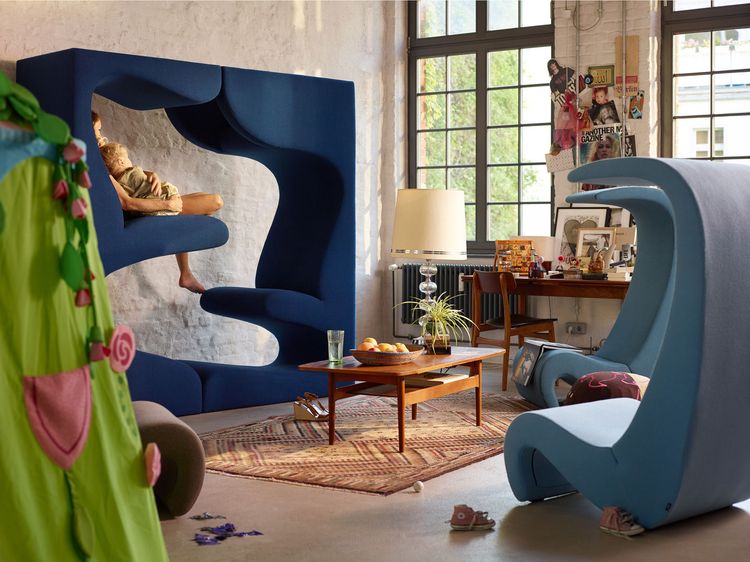
Vitra Living Tower
by Verner Panton
Verner Panton, renowned for his vibrant colors, geometric patterns, and immersive interiors, revolutionized 1960s design through his vision of gesamtkunstwerk—a total work of art uniting architecture, furniture, lighting, and textiles into one cohesive experience. His iconic projects, including the Visiona ship installations for the Cologne Furniture Fair and the Spiegel publishing headquarters in Hamburg, exemplify this holistic approach. Designed in 1969, Panton’s Living Tower perfectly embodies the era’s “domestic landscape” theme, featuring organic forms and multiple tiers that invite users to sit, recline, and interact in comfort. Reissued by Vitra, the Living Tower remains a timeless symbol of Panton’s forward-thinking spirit, merging art, function, and social connection in a single sculptural form.
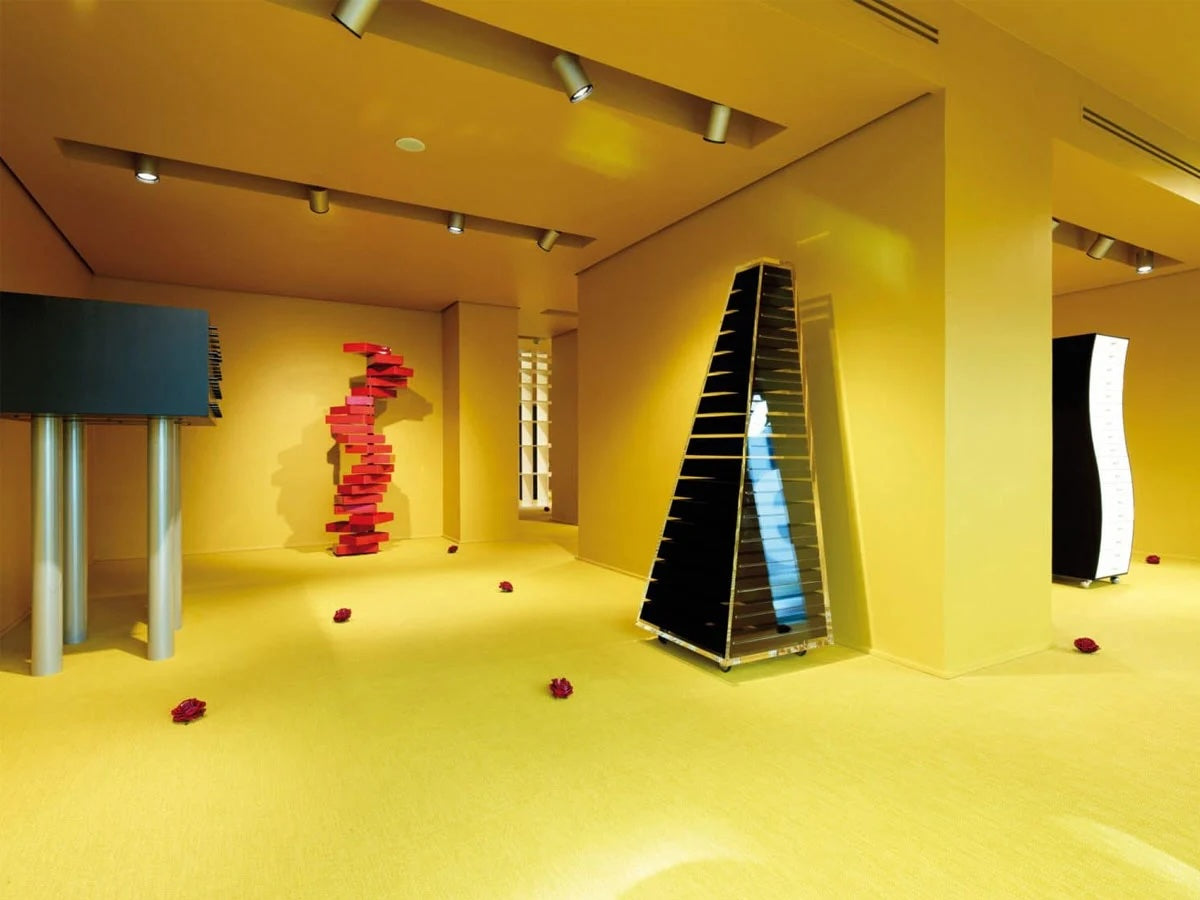
Cappellini Pyramid in an exhibit
Cappellini Pyramid
by Shiro Kuramata
The Pyramid Cabinet is a striking pyramid-shaped structure composed of 17 black transparent acrylic drawers on castors, all encased within clear glass. Designed by Shiro Kuramata in 1968 for the Italian manufacturer Cappellini, its swivel wheels allow effortless movement, while the bold form evokes the grandeur of ancient pyramids. A true design icon, Kuramata epitomized the creative spirit of his era through his imaginative and boundary-pushing works. His designs remain remarkably modern today, with many housed in the permanent collections of prestigious institutions such as the Museum of Decorative Arts in Paris, MoMA in New York, the Metropolitan Museum, the Vitra Design Museum, and the Museum of Modern Art of Toyama.
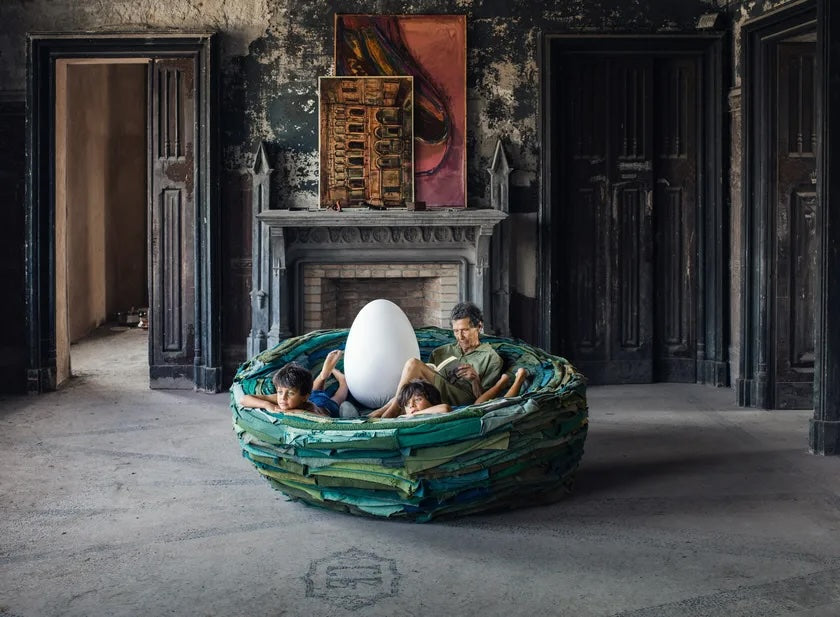
La Cova in a room
La Cova
by Gianni Ruffi
La Cova (The Nest) is a 1973 artistic masterpiece by Gianni Ruffi, originally produced by Poltronova and later reissued by Gufram in 2015. More a work of art than a design product, it embodies a surreal blend of comfort and creativity, offering a physical and imaginary space of serenity. Ruffi, an artist inspired by nature rather than urban consumerism, transformed his 1969 concept of a carex nest with ovoid iron structures into a piece of furniture that challenged bourgeois design norms. The set features a sofa and three egg-shaped cushions sculpted from polyurethane foam and covered in white imitation leather, resting within a nest woven from second-hand military garments sourced from Prato’s textile market. Each La Cova piece, crafted with hand-sewn fabric offcuts, stands as a unique symbol of utopian design and a tactile expression of surrealism, security, and artistic rebellion.
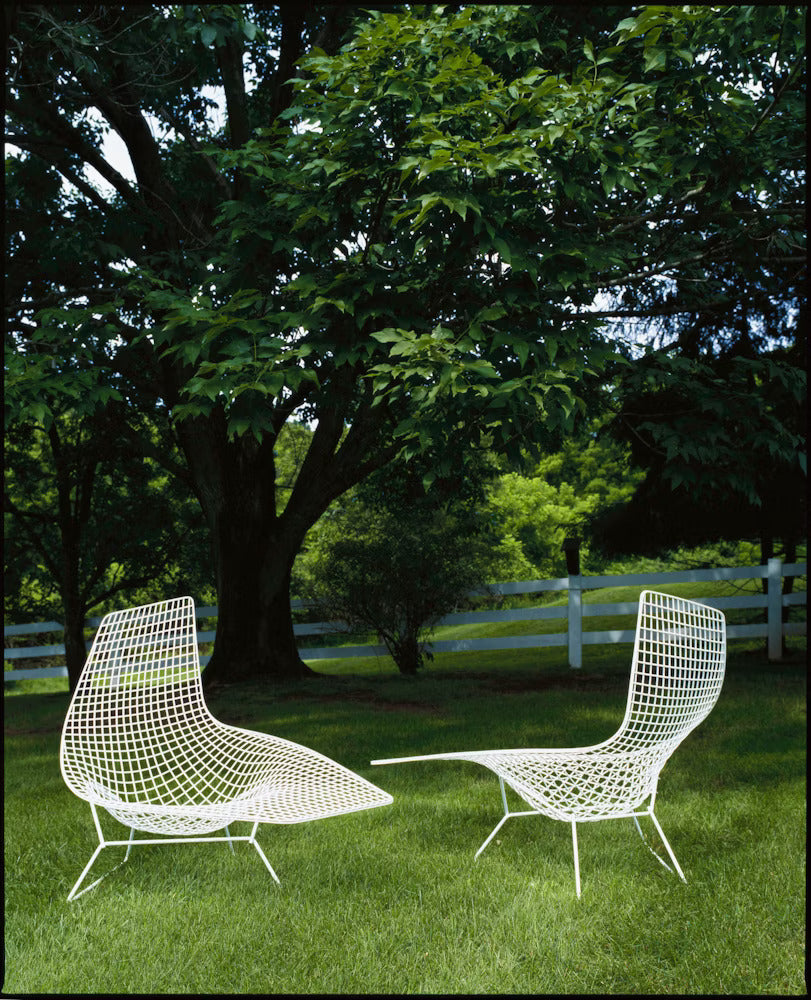
Knoll Bertoia Asymmetric Chaise on a lawn
Knoll Bertoia Asymmetric Chaise
by Harry Bertoia
The Asymmetric Chaise is the most sculptural piece in Harry Bertoia’s 1952 wire chair collection for Knoll, a defining achievement of mid-century modern design. Initially introduced as a prototype in Bertoia’s 1950 presentation to Hans and Florence Knoll, the chaise extended the form of the Large Diamond Chair into an asymmetrical silhouette. Due to the technical complexity of production, the design was shelved for decades until 2005, when Knoll, with the help of Bertoia’s family, brought it to life using one of the original prototypes as a model. The final version preserves Bertoia’s vision, offering both a full-length upholstered pad (originally designed by Richard Schultz )and an optional seat pad for comfort. Today, the Asymmetric Chaise stands as a rare and elegant synthesis of sculpture and function, celebrating Bertoia’s enduring artistic ingenuity.
Eames Lounge Chair and Ottoman by Charles and Ray Eames
The Eames Lounge Chair and Ottoman, designed by Charles and Ray Eames, were conceived as pieces “designed for living,” combining timeless elegance with inviting comfort. Charles described their vision as creating something with “the warm, receptive look of a well-used first baseman’s mitt,” reflecting the couple’s desire for a chair that feels both luxurious and lived-in. When the set debuted on national television in 1956 on NBC’s Home show hosted by Arlene Francis, it instantly captured public attention, propelling both the design and its creators to stardom. Decades later, the piece remains an icon of handcrafted craftsmanship and enduring comfort, embodying the perfect harmony of design and human warmth.
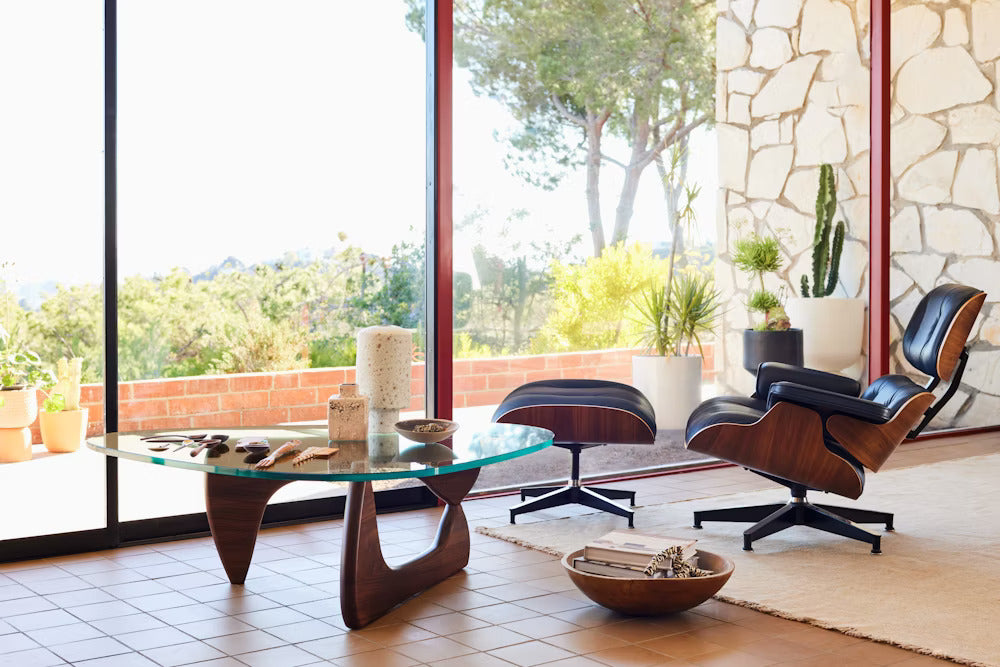
Eames Lounge Chair and Ottoman in a home
Together, these pieces exemplify the boundless creativity and innovation that defined mid-century and modern design. Each one, whether sculptural, functional, or surreal, transcends its purpose as furniture to become an enduring work of art that shapes how we live and experience space. Their lasting relevance reminds us that great design is not just seen or used, but felt in an intimate dialogue between imagination, form, and human connection. That is what makes these chairs truly iconic.


